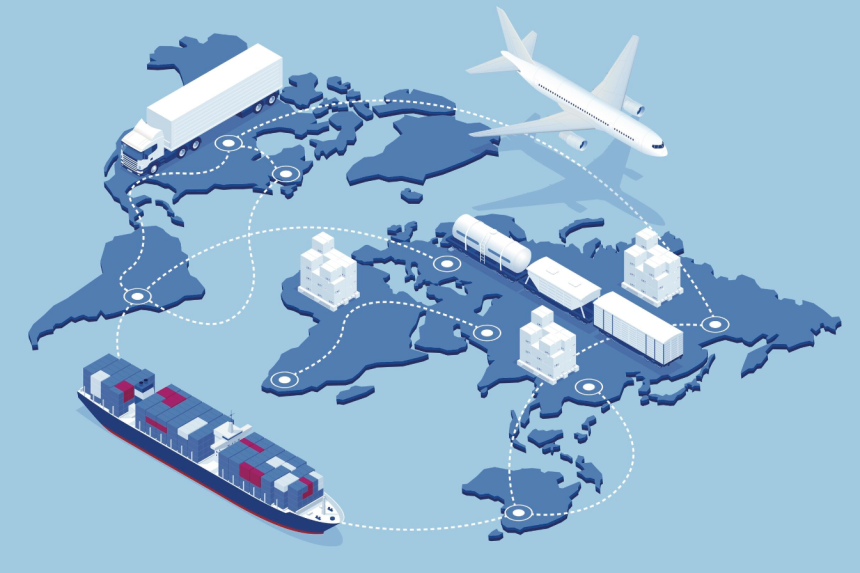Have you ever wondered how companies manage to deliver products across vast distances with such precision and efficiency? The answer lies in advanced supply chain freight management software. These freight management systems are revolutionizing the way businesses handle logistics, ensuring that goods move seamlessly from origin to destination. This article explores the pivotal role of supply chain software in enhancing long-term transport, detailing its features, capabilities, and the numerous benefits it offers.
I. Role of Supply Chain Software
A. Definition and Purpose of Supply Chain Software
Supply chain software encompasses a range of tools designed to manage and optimize the various processes involved in the movement of goods. These tools provide comprehensive solutions for planning, executing, and monitoring supply chain activities, facilitating a streamlined approach to logistics and transportation.
- Definition: Supply chain software refers to applications and platforms that enable businesses to manage their supply chain operations more efficiently.
- Purpose: The primary aim is to enhance coordination and communication across the supply chain, improve decision-making processes, and ensure timely delivery of goods.
B. Importance of Integrating Supply Chain Software in Long-Term Transport Planning
Integrating supply chain software into long-term transport planning is crucial for maintaining competitiveness and achieving sustainable growth in today’s dynamic market. By leveraging advanced technological solutions, businesses can better anticipate challenges, streamline their operations, and adapt to rapidly changing market conditions.
- Strategic Planning: Supply chain software provides businesses with data-driven insights into future demand and supply trends. This enables companies to make informed decisions, plan strategically, and allocate resources effectively. The predictive capabilities of such software help businesses forecast demand, manage inventory levels, and plan for seasonal fluctuations, ensuring that they are always prepared to meet customer needs.
- Operational Efficiency: Automating routine tasks such as order processing, shipment tracking, and inventory management significantly enhances operational efficiency. Supply chain software optimizes resource allocation, ensuring that vehicles, personnel, and other resources are used effectively. This reduces operational costs, minimizes delays, and improves overall productivity.
- Risk Mitigation: Supply chain software plays a vital role in identifying potential risks and developing contingency plans to mitigate disruptions. By providing real-time visibility into the supply chain, businesses can quickly identify bottlenecks, predict potential disruptions, and take proactive measures to address them. This capability is crucial for maintaining continuity in operations and ensuring that goods are delivered on time, even in the face of unforeseen challenges.
II. Features and Capabilities of Supply Chain Software
A. Real-Time Tracking and Monitoring of Shipments
Real-time tracking and monitoring of shipments are indispensable features of modern supply chain software, offering businesses unparalleled visibility and control over their logistics operations.
Logistics Tracking Software leverages GPS and RFID technologies to provide live updates on the location and status of shipments. This enables companies to track goods from origin to destination, ensuring transparency and accountability throughout the supply chain.
Cargo Management Software ensures that all stakeholders have access to up-to-date information, empowering them to make informed decisions and take proactive measures to address any issues that may arise. By centralizing data and communication channels, cargo management software facilitates efficient collaboration and coordination among various parties involved in the logistics process.
Enhanced Visibility provided by supply chain visibility software solutions enables businesses to monitor their entire supply chain in real-time. This comprehensive view helps identify potential bottlenecks and streamline operations, ultimately reducing the likelihood of delays and losses, and enhancing overall efficiency and customer satisfaction.
B. Optimization of Transportation Routes and Modes
Optimizing transportation routes and modes is essential for reducing costs and improving delivery times.
- Route Optimization: Advanced algorithms analyze various factors such as traffic, weather, and fuel costs to determine the most efficient routes.
- Mode Selection: Helps in selecting the most suitable mode of transportation (e.g., air, sea, rail, or road) based on cost, speed, and reliability.
- Freight Management System: Integrates with freight management services to streamline the process of booking and managing transportation options.
C. Forecasting and Predictive Analytics for Long-Term Planning
Forecasting and predictive analytics are powerful tools for long-term transport planning.
- Demand Forecasting: Predicts future demand patterns based on historical data, helping businesses to prepare for peak periods.
- Predictive Maintenance: Uses data analytics to anticipate maintenance needs for vehicles and equipment, reducing downtime.
- Scenario Planning: Allows businesses to model different scenarios and assess their impact on the supply chain, facilitating better long-term planning.
III. Benefits of Supply Chain Software in Long-Term Transport
A. Enhanced Visibility and Transparency in Transport Operations
Enhanced visibility and transparency are among the most significant benefits of using supply chain software in transport operations.
- Real-Time Data: Provides real-time data on the movement of goods, enabling better coordination and communication.
- End-to-End Supply Chain: Ensures that all aspects of the end to end supply chain are visible, from suppliers to end customers.
- Transparency: Increases transparency, making it easier to identify and address issues promptly.
B. Cost Savings Through Optimized Transport Routes and Resource Allocation
Cost savings are a critical advantage of implementing supply chain software.
- Reduced Fuel Costs: By optimizing routes, businesses can significantly reduce fuel consumption.
- Efficient Resource Allocation: Ensures that resources such as vehicles and personnel are used efficiently, reducing operational costs.
- Freight Management Consulting: Provides expert advice on how to optimize freight operations, leading to further cost reductions.
C. Improved Reliability and Efficiency in Long-Term Transport Planning
Supply chain software enhances the reliability and efficiency of long-term transport planning.
- Consistent Deliveries: Ensures that deliveries are consistent and on-time, improving customer satisfaction.
- Efficiency Gains: Streamlines processes, reducing the time and effort required to manage transport operations.
- Scalability: Scales with the business, supporting growth and expansion without compromising efficiency.
Conclusion
Supply chain software is a game-changer for long-term transport planning. By offering real-time tracking, route optimization, and predictive analytics, these solutions provide enhanced visibility, significant cost savings, and improved reliability. Integrating these advanced tools into supply chain operations ensures that businesses can navigate the complexities of global logistics with confidence, delivering goods efficiently and effectively. As supply chains continue to evolve, the role of supply chain software will only become more critical, driving innovation and excellence in transport management.














